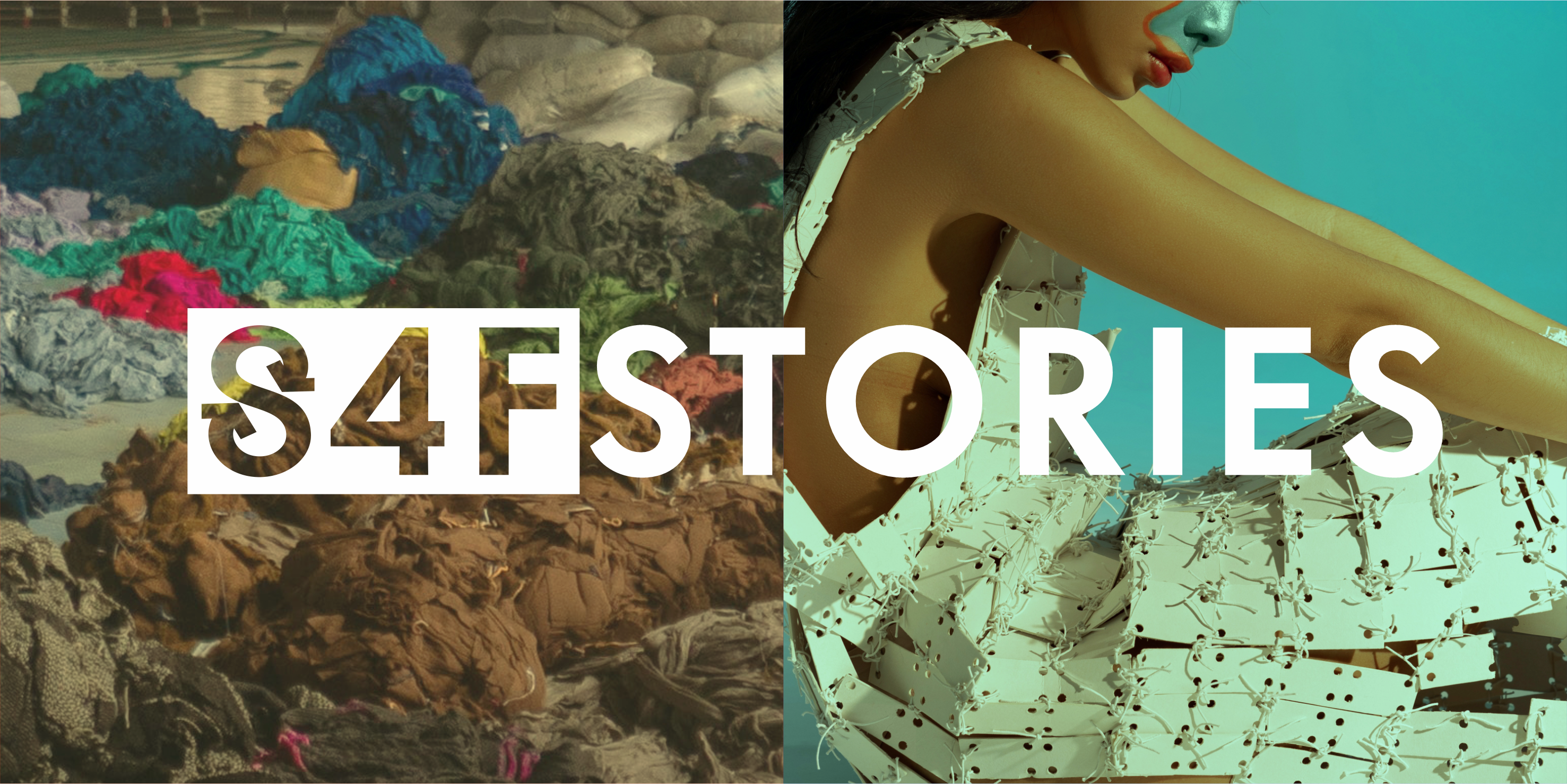Aniela Hoitink is an autodidact on the implantation of technology and microbiology into textiles. Her focus is on changing material and production techniques, instead of changing human behaviour. She believes this is easier than changing our consumption behaviour, as this behaviour is much. Currently her focus is on MycoTEX, a ground breaking automated seamless manufacturing method allowing for custom-made products made from compostable mushroom roots.
Why do you support circular/sustainable fashion?
When I founded my company NEFFA in 2008 sustainable fashion was connected with green, boring design. The products looked like my mother had washed them already 100 times and there were discussions about whether to use a button made of cork. Not really appealing for consumers. I started focus]sing on innovation as I felt that this could lead to nicer products. I learned how to work with technology and microbiology and how to implement innovation from these other industries into textile products. And discovered that this was my way of working towards a better textile industry.
MycoTEX started in 2014 as a project with the Utrecht University to explore mycelium as a potential material for textiles. Initially the goal was to develop wall textiles that could function as a sound absorber. Along the way I discovered I could create textiles directly in 3D, which suited my dream for customization on mass-production scale. From the beginning there was a lot of interest for my ideas, from the microbial field to design to consumers. However the fashion industry was not one of them. They were looking for yarns to implement – as that was what they understood – not for an all-in-one solution solving some of the bigger issues like waste and dyeing. A lesson that I learned was that innovation does not necessarily happen from within the industry itself.
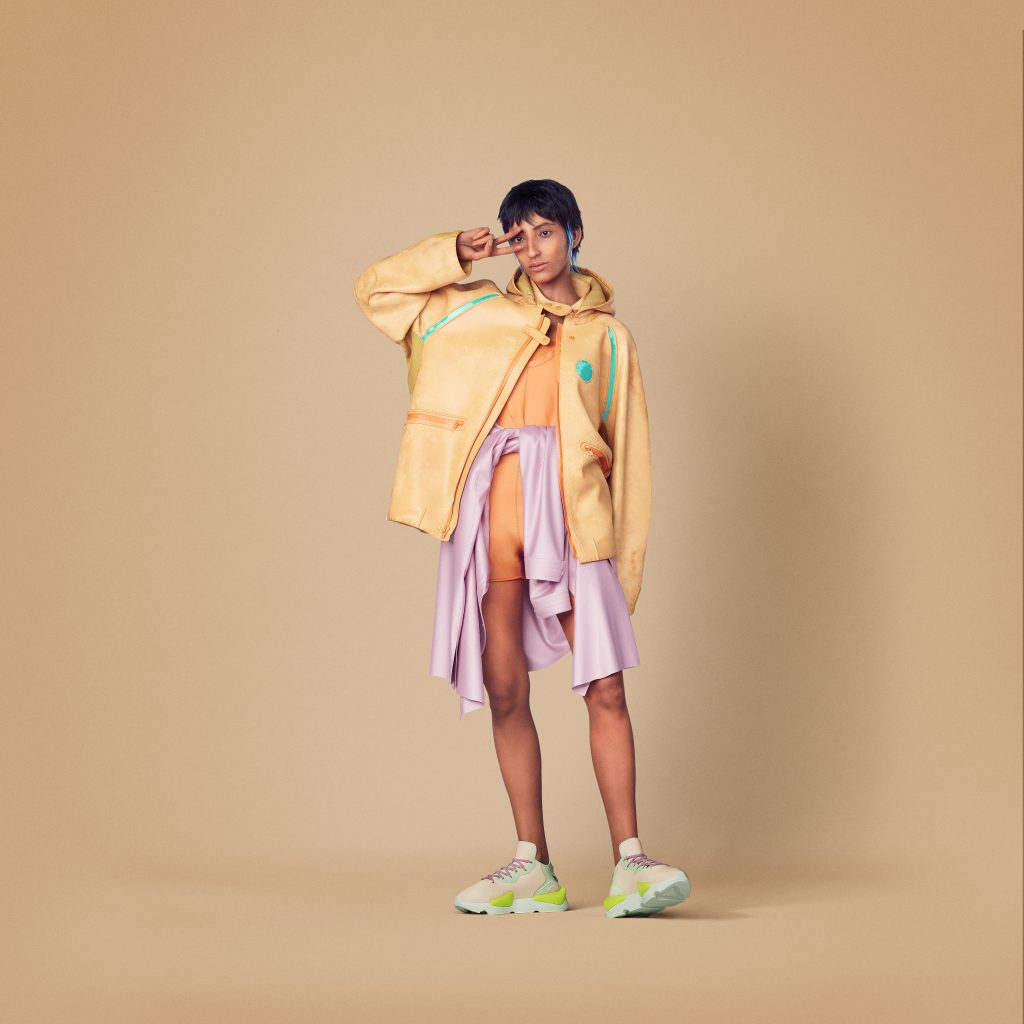
MycoTEX biker jacket – 3D rendering for the Billion Dollar Collection
credits: MycoTEX, H&M Foundation, Mackevision
What is your main challenge implementing sustainability/circular fashion in your vocation?
One of the main challenges I had (and still have) was convincing others about our disruptive and innovative idea already in an early stage. You can’t do it on your own. That is why you need external support and built a team.
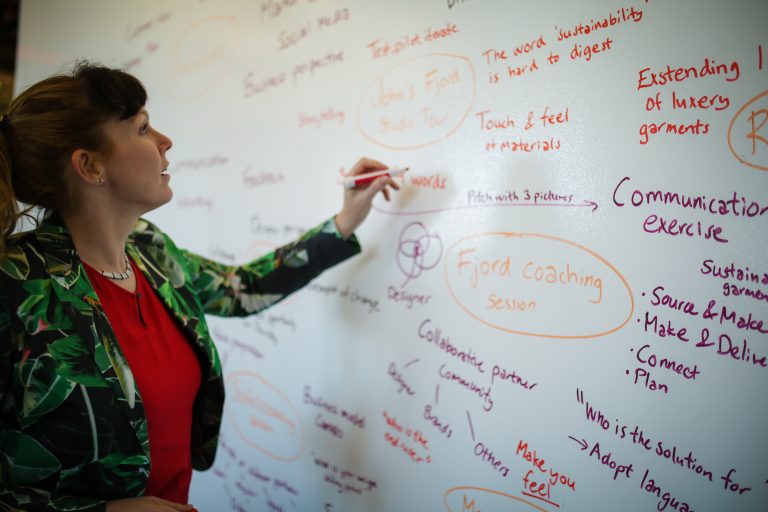
Aniela Hoitink, founder of MycoTEX
credits: Aniela Hoitink | MycoTEX
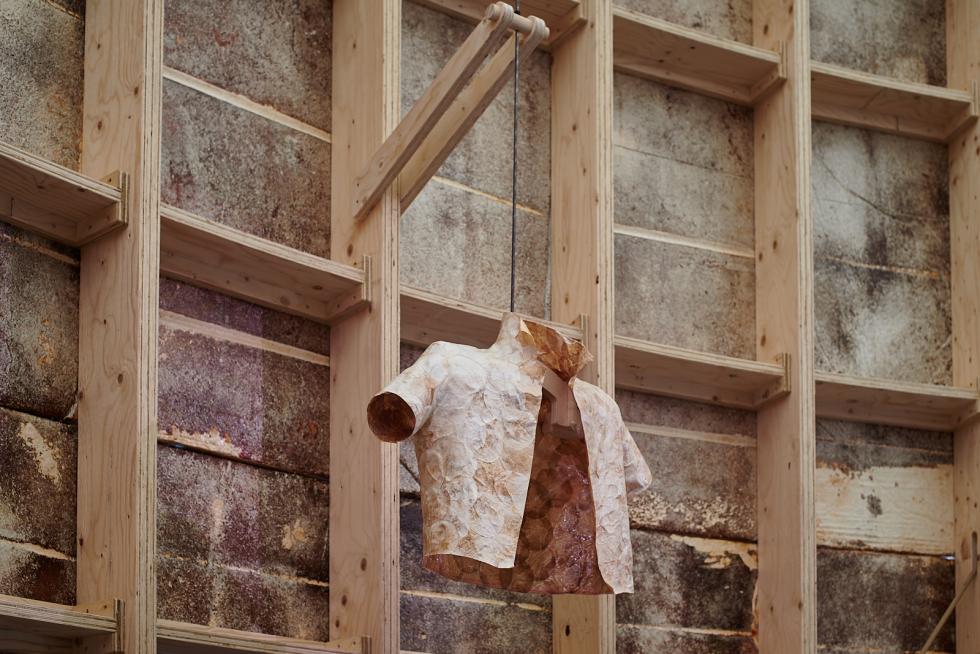
MycoTEX seamless jacket at the Growing pavilion
credits: Oscar Vinck
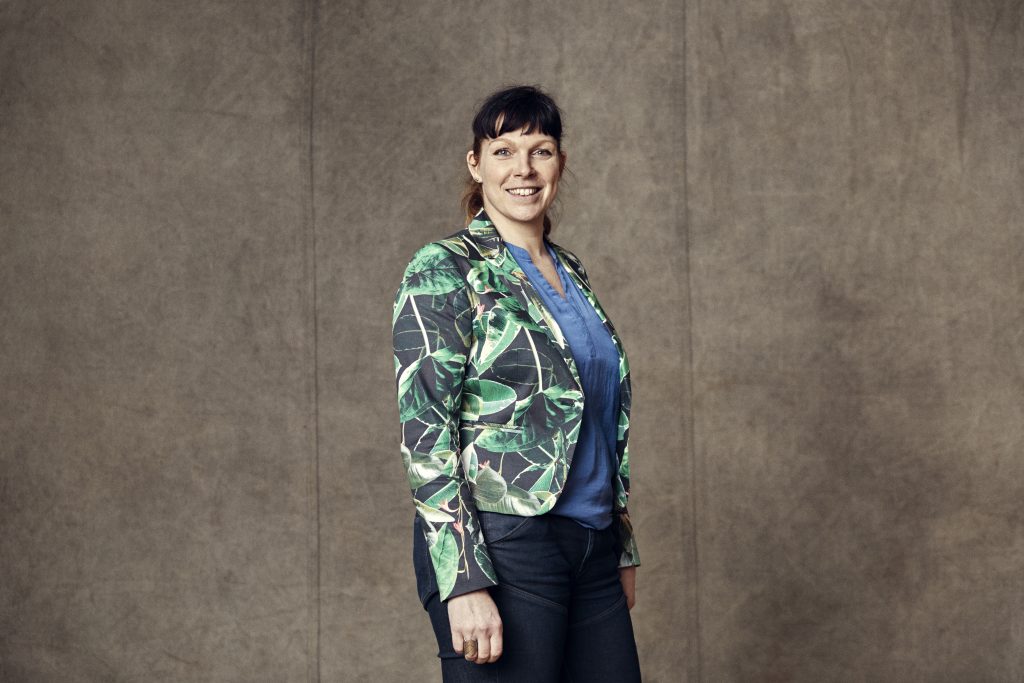
Aniela Hoitink, founder of MycoTEX
credits: Aniela Hoitink | MycoTEX
Describe the experience
In order to convince others, an important part for us was to get external validation on the feasibility. We needed to know if we were feasible from a product and technology perspective, and from a consumer / brand perspective. Already very early on we have been testing our first samples and prototypes with consumers and brands to see if they would want to buy our products, and what we needed to improve if they didn’t.
I know a lot of people want to wait till they have a great product before having these conversations. However, by waiting too long, you might be developing something that consumers or brands don’t want or like. In our case, we learned that we needed to change the looks of our material. Mycelium as a material source for textiles – unknown in 2016 – was actually not seen as a problem. So we worked on changing our growing method. And by doing so, we actually created a better product with many more possibilities than we initially could make.
Regarding the technology feasibility, we have and had the end-goal in mind: production on a large scale. That was another reason for us not to wait until we had created the perfect sample or prototype. We wanted to learn as early as possible that what we did was scalable and also could become cost-competitive. We did not want to spend years on creating something that might not work at the end. That is why we started working with (small scale) industrial equipment as soon as we could, tested the first scale-up steps of the raw biomass and had an external company perform a feasibility study based on that. Besides proving scalability and cost-efficiency in the longer term, it also taught us where to pay attention to during further scaling-up to become even more sustainable.
Next to this we had an external party perform a first Life Cycle Analysis (LCA) as a benchmark. This gave relevant information in terms of sustainability. By knowing this early on, we will be able to implement this whilst further scaling-up. We also wanted to compare our supply chain against that of leather and plastics. This was not possible because of a lack of data, which actually proves our point of the non-transparent textile industry.
The more external validation we get, the easier it becomes to convince more people and companies to support us. However this does not go overnight. Our first mentors helped us to get us on track, participation in an accelerator gave more credibility around brands and made it easier to talk to them, writing many (!) grant applications led to winning one of them, which led to improving the material, the feasibility report gave more interest from investors, etc.
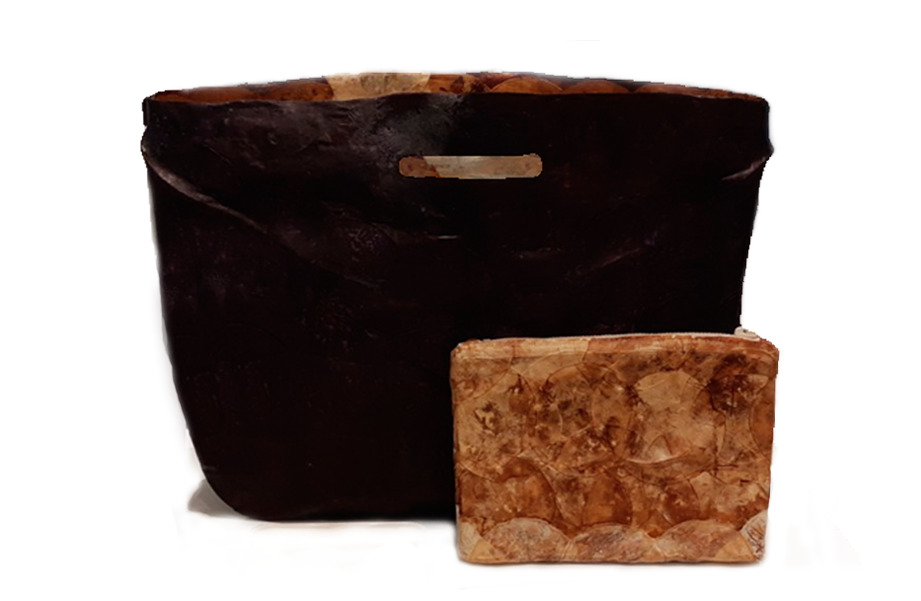
MycoTEX compostable seamless shopper and etui
credits: Aniela Hoitink | MycoTEX
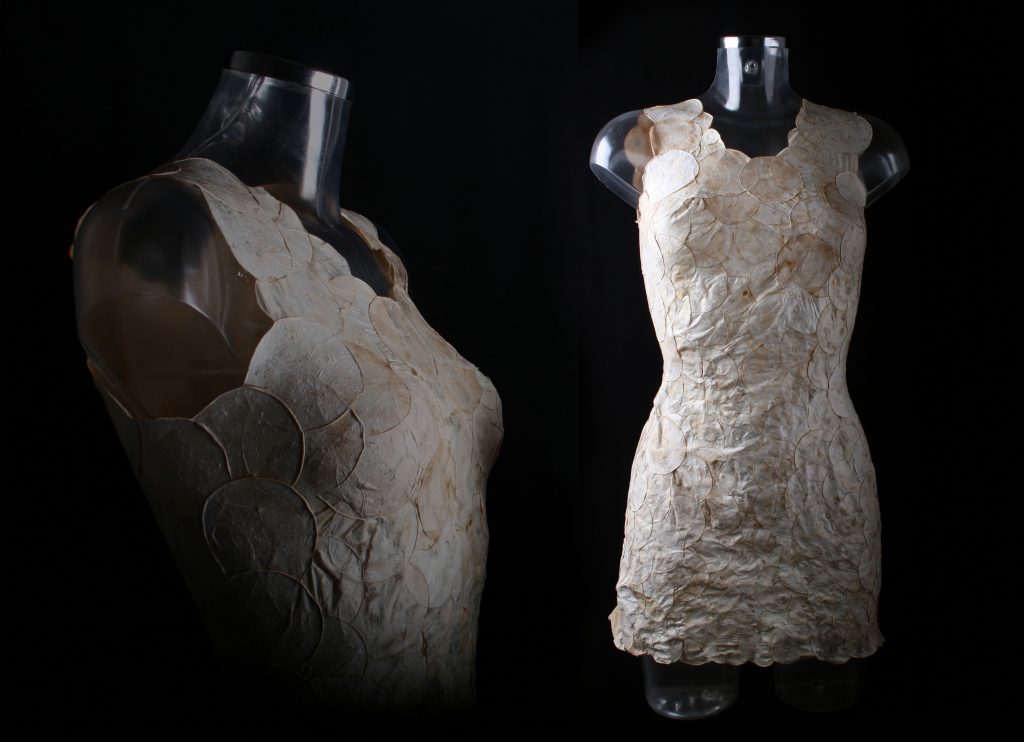
MycoTEX first compostable mycelium dress
credits: Aniela Hoitink | MycoTEX
With every step - how small it sometimes might seem - we get a bit closer to our end goal. All it takes is a vision, time and dedication. I hope you can take your next step today.
Important notice: The above content is not approved by the European Commission.
